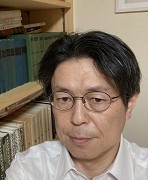

|
Fri25 Jul11:15am(15 mins)
|
Where:
A5.02
Presenter:
|

The Russian critic and writer Rozanov writes of the change we experience in turning from Gogol to Dostoevsky and other writers of the new generation: “For the first time we hear human voices, we see joy and anger on people’s faces.” Although Rozanov refers to the “voice” in a figurative sense, we can consider his remarks with reference to the controversy between the Russian formalist Eikhenbaum and Bakhtin over the discourse in the novel. While Eikhenbaum spoke of the illusion of the narrator-comedian performing on an imaginary stage in the style of skaz, Bakhtin emphasized the significance of the “voice” as an expression of the ideological positions of characters; for Bakhtin, skaz was not so much an orientation toward the oral form as an orientation toward someone else’s speech. We could argue that the controversy between the two was, in fact, over the rupture in the history of the realist novel, and it testified to the difference in the way Gogol and realists of the new generation processed the voice. Dostoevsky’s polyphony was achieved by separating the “voice” from the narrator’s body.
We can observe the same question of the narrator’s body and the voice in Futabatei Shimei, the founder of the Japanese modernist novel. His novel The Drifting Clouds begins with the theatrical gesture of a storyteller, which reminds us of Gogol’s Nevsky Prospect. However, the narrator gradually disappears from the stage, and his voice begins to merge with that of the hero. The intersecting reading of Russian and Japanese writers thus reveals some parallelism in the processing of the voice. This will also shed light on the decisive role that stenography played in the history of the realist novel.